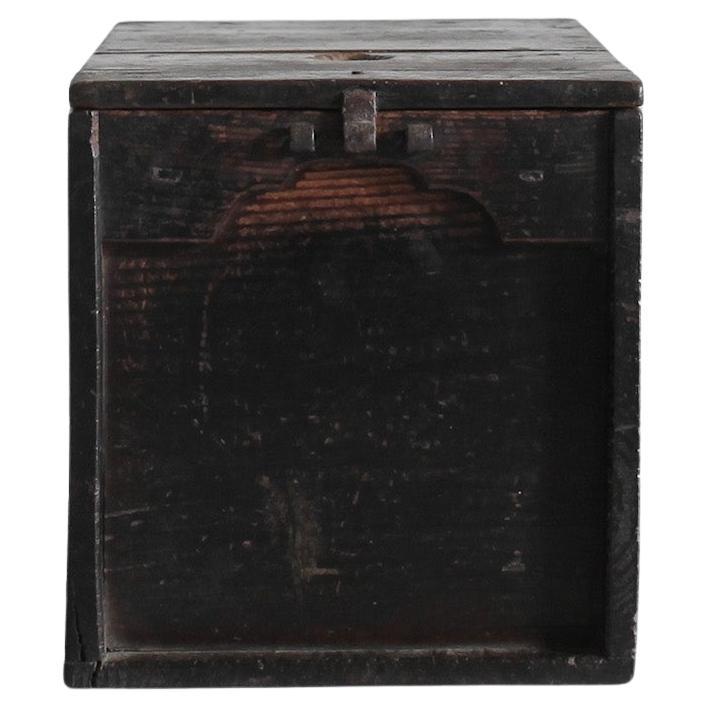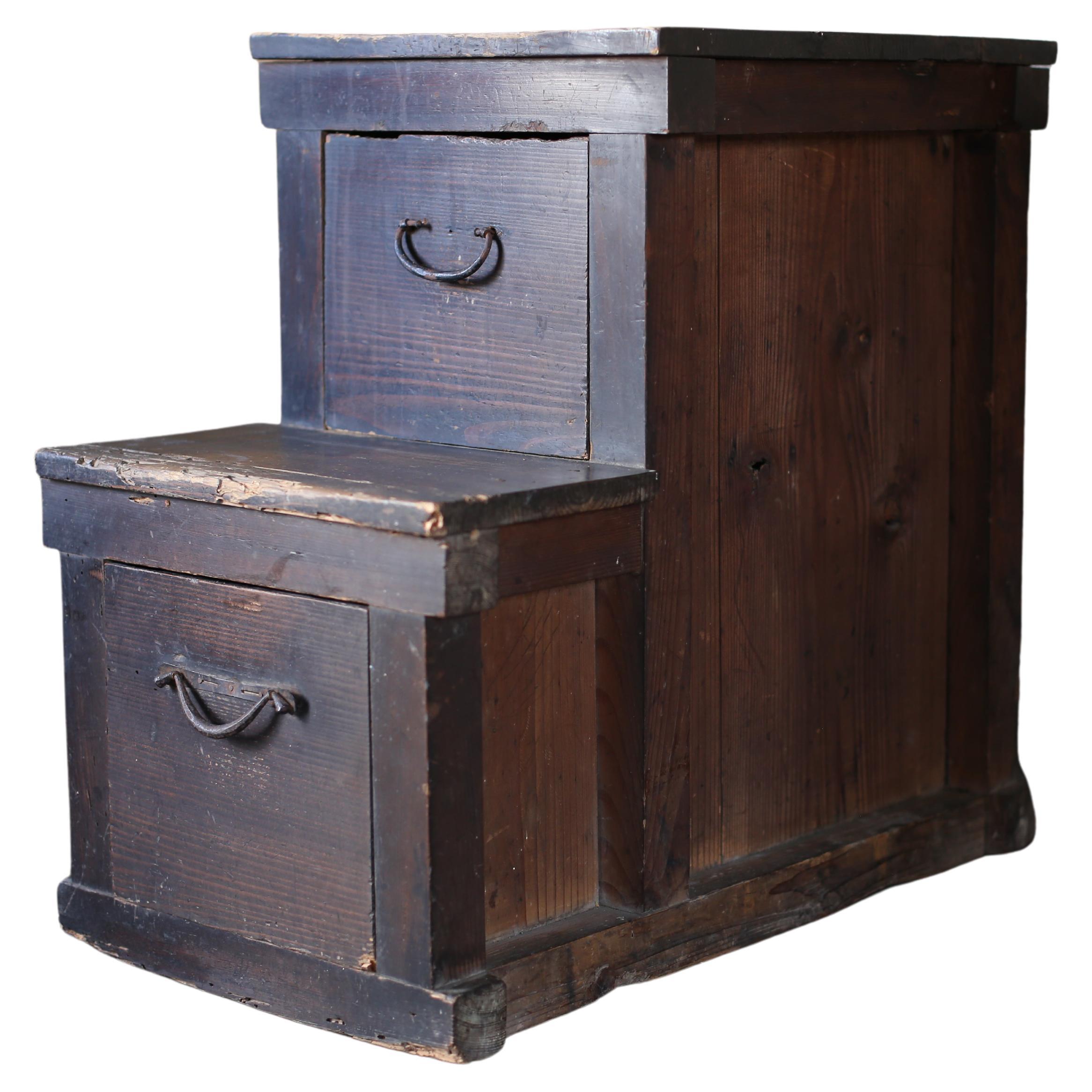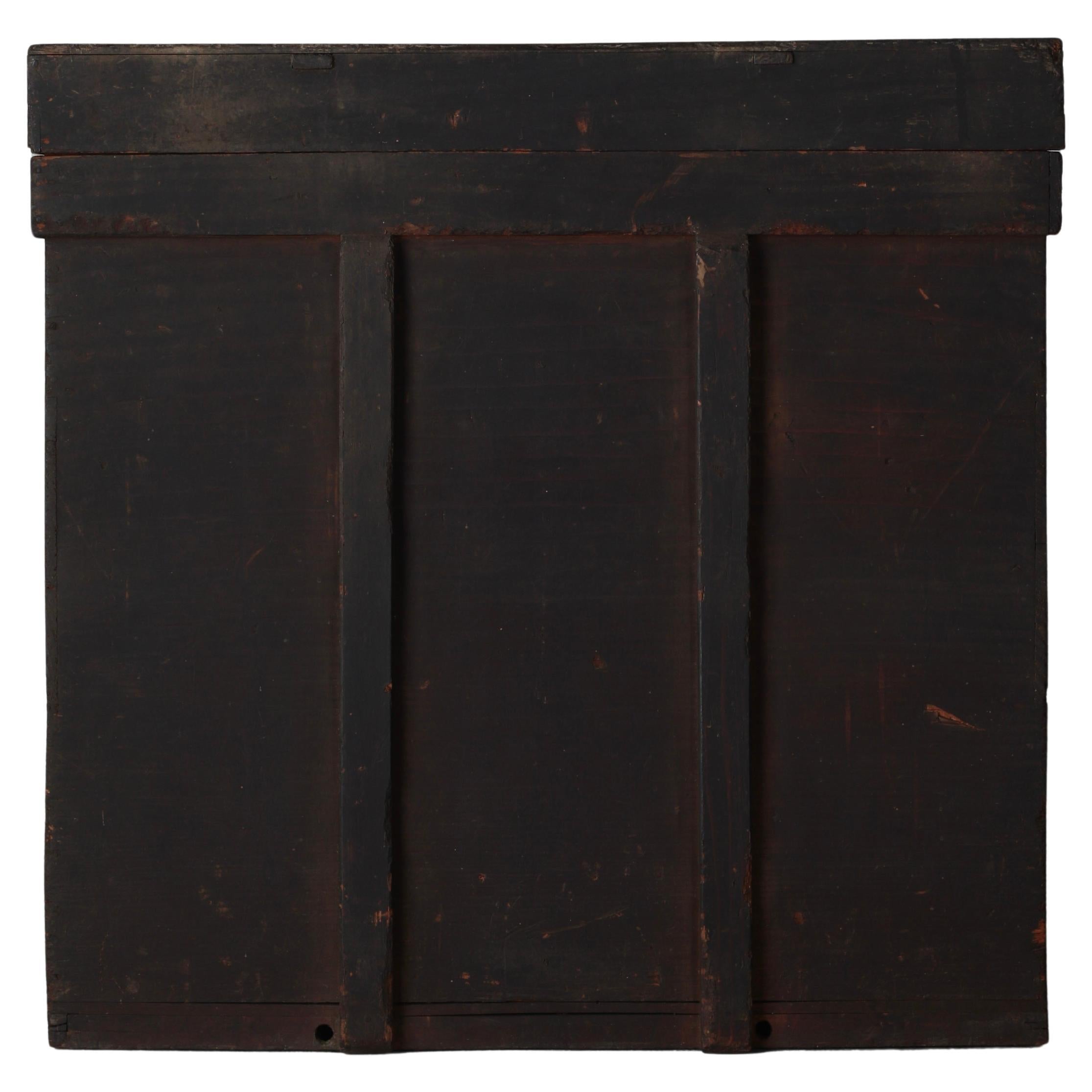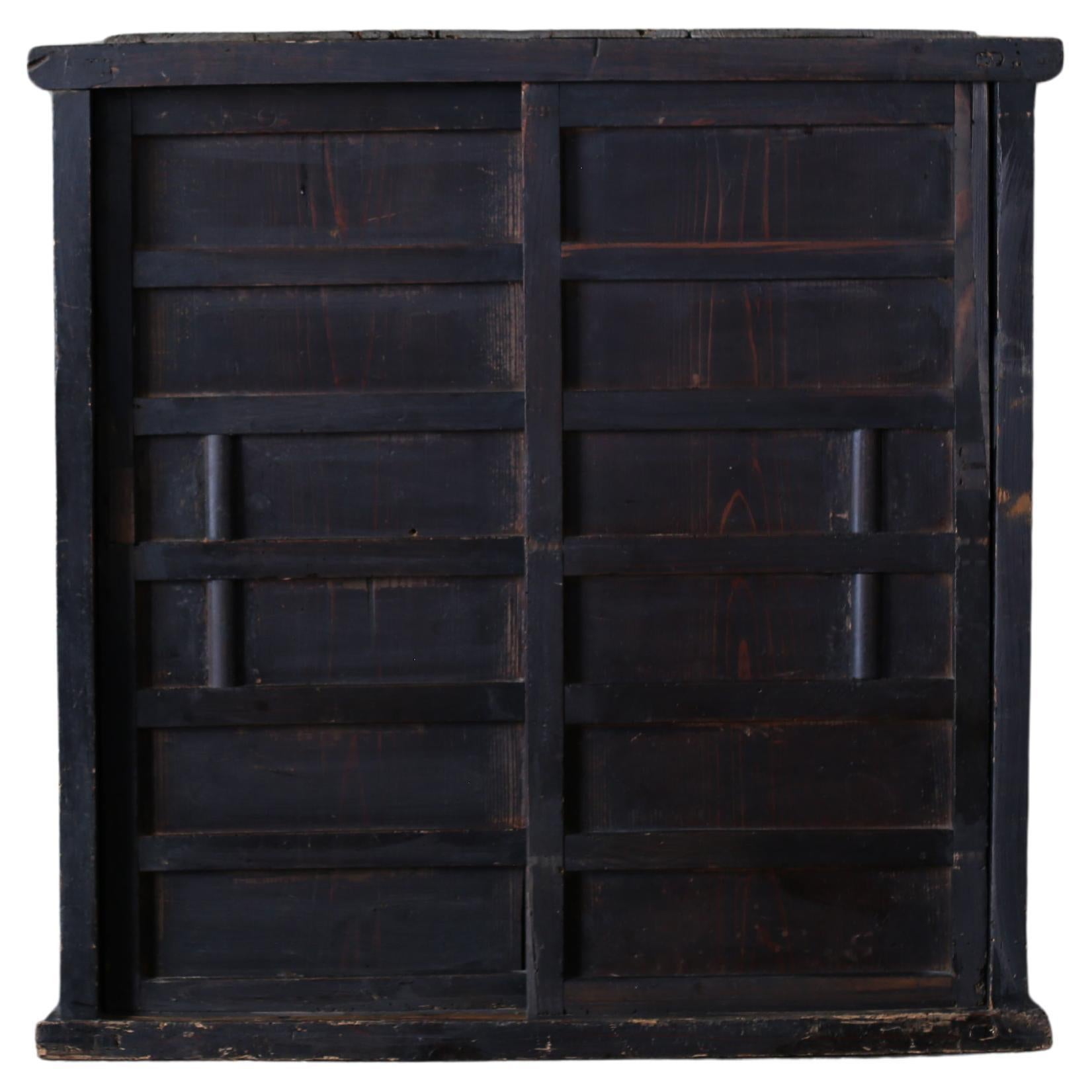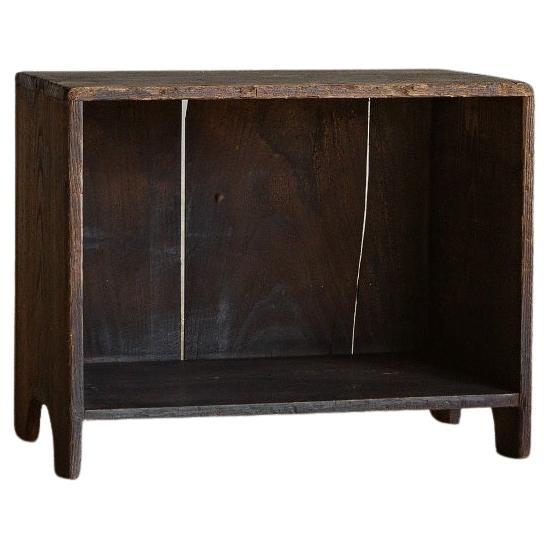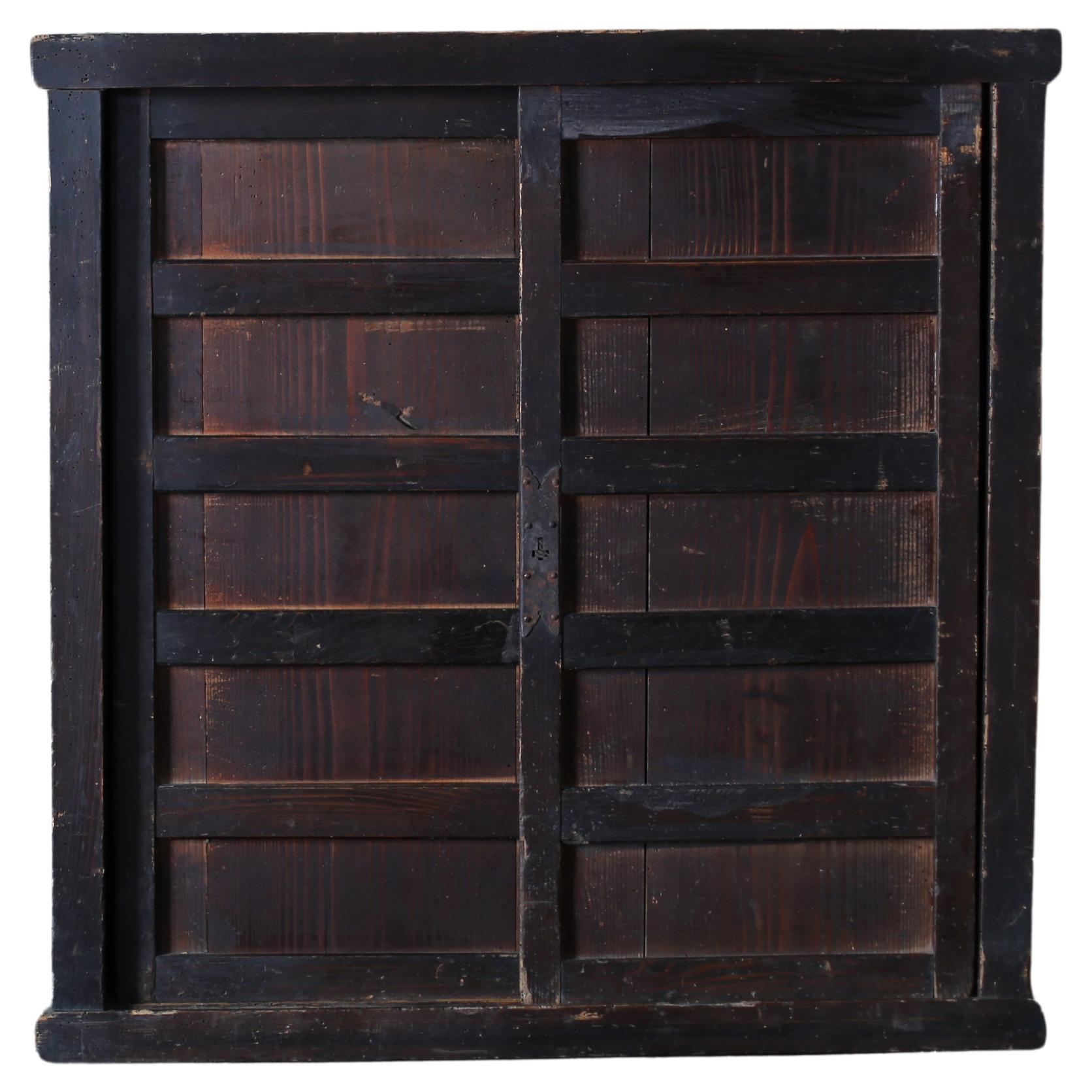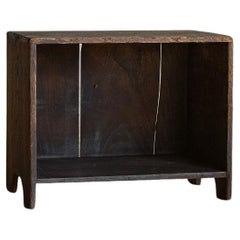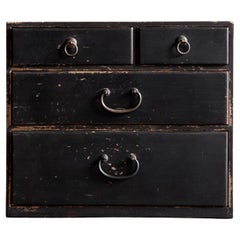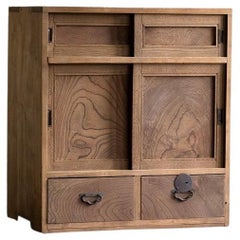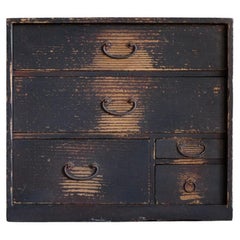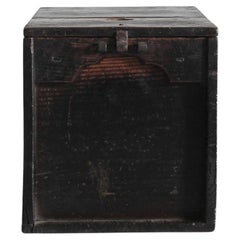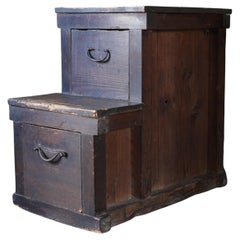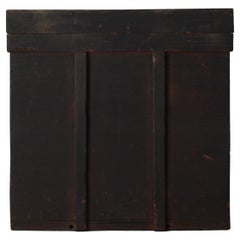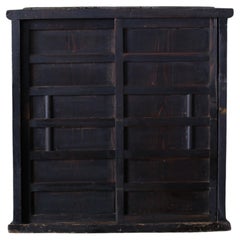Items Similar to Japanese Antique Buddhist Shrine Box "Zushi", Edo Period '1603-1868'
Want more images or videos?
Request additional images or videos from the seller
1 of 21
Japanese Antique Buddhist Shrine Box "Zushi", Edo Period '1603-1868'
$680
£525.34
€597.13
CA$966.86
A$1,052.39
CHF 554.35
MX$12,810.27
NOK 6,941.71
SEK 6,517.02
DKK 4,459.40
About the Item
This antique Buddhist shrine box was crafted in the Edo Period (1603-1868).
Known in Japan as a “Zushi,” it served as a small sanctuary to enshrine Buddhist figures, scriptures, or sacred objects, protecting them while allowing for private devotion at home.
Made of cedar wood, this piece has endured through centuries, acquiring a profound patina that speaks of its age and history. The surface has darkened over time, a characteristic often attributed to exposure to smoke and soot from traditional Japanese hearths, which impart a deep, nuanced beauty to the wood.
Beyond its religious significance, this shrine box also embodies the aesthetic values of wabi-sabi, appreciating the elegance found in age, imperfection, and simplicity.
A rare find, it stands as both a cultural artifact and a striking decorative object for interiors inspired by Japanese art and craftsmanship.
We have carefully inspected the piece for any damage or defects and found no issues. It is in excellent antique condition, with natural signs of age that add to its character.
Weight :2.76lbs(1.25kg)
Shipping Information
We ship from Japan. I will provide my own shipping quote. Please ask.
- Dimensions:Height: 10.79 in (27.4 cm)Width: 9.22 in (23.4 cm)Depth: 4.18 in (10.6 cm)
- Style:Edo (Of the Period)
- Materials and Techniques:
- Place of Origin:
- Period:Mid-17th Century
- Date of Manufacture:1603-1868
- Condition:Wear consistent with age and use. The piece has only been lightly dusted to preserve its original condition. It has undergone a careful inspection for any damage or defects and is confirmed to be in excellent antique condition, with natural signs of age that add to its character.
- Seller Location:Hitachiomiya-shi, JP
- Reference Number:1stDibs: LU7430245878712
About the Seller
5.0
Platinum Seller
Premium sellers with a 4.7+ rating and 24-hour response times
Established in 2019
1stDibs seller since 2022
76 sales on 1stDibs
Typical response time: 1 hour
- ShippingRetrieving quote...Shipping from: Hitachiomiya, Japan
- Return Policy
Authenticity Guarantee
In the unlikely event there’s an issue with an item’s authenticity, contact us within 1 year for a full refund. DetailsMoney-Back Guarantee
If your item is not as described, is damaged in transit, or does not arrive, contact us within 7 days for a full refund. Details24-Hour Cancellation
You have a 24-hour grace period in which to reconsider your purchase, with no questions asked.Vetted Professional Sellers
Our world-class sellers must adhere to strict standards for service and quality, maintaining the integrity of our listings.Price-Match Guarantee
If you find that a seller listed the same item for a lower price elsewhere, we’ll match it.Trusted Global Delivery
Our best-in-class carrier network provides specialized shipping options worldwide, including custom delivery.More From This Seller
View AllJapanese Antique Small Shelf, Late Meiji Era'1868-1912'Wabi Sabi
Located in Hitachiomiya-shi, 08
This antique small shelf was crafted in the Late Meiji Era(1868-1912).
It features a rich and deep color that highlights the beautiful patina developed over time. The wood's natural...
Category
Antique Late 19th Century Japanese Meiji Shelves
Materials
Chestnut
Japanese Antique Small Chest of Drawers, Keio Era (Edo Period, 1867), Wabi Sabi
Located in Hitachiomiya-shi, 08
This antique small chest of drawers was crafted in the Keio Era (1867).
Made from Japanese cedar and finished with traditional Japanese lacquer (urushi), the surface has developed a...
Category
Antique Mid-19th Century Japanese Edo Commodes and Chests of Drawers
Materials
Cedar
Japanese Antique Small Cabinet with Wooden Door, Taisho Era'1912-1926'Wabi Sabi
Located in Hitachiomiya-shi, 08
This antique small cabinet was crafted in the Taisho Era (1912-1926), reflecting the exceptional craftsmanship of the period. The front panel is made from exquisite keyaki wood, with...
Category
Early 20th Century Japanese Taisho Cabinets
Materials
Wood
Japanese Antique Small Chest of Drawers, Edo Era (Tenpō 1830-1844), Wabi-Sabi
Located in Hitachiomiya-shi, 08
This antique small chest of drawers was crafted in the Edo Era (Tenpō 1830-1844).
The aged urushi (Japanese lacquer), worn away in places, enhances the piece’s unique character and ...
Category
Antique 1840s Japanese Edo Commodes and Chests of Drawers
Materials
Cedar
$560 Sale Price
30% Off
Japanese Antique Compact Chest, Meiji Era '1868-1912'Wabi Sabi
Located in Hitachiomiya-shi, 08
This compact chest was crafted in the Meiji Era (1868-1912).
It features a handle on top, making it easy to carry or reposition as needed.
The aged patina of the wood highlights i...
Category
Antique 1890s Japanese Meiji Commodes and Chests of Drawers
Materials
Cedar
$400 Sale Price
20% Off
Japanese Antique Large Mizuya Tansu, Meiji Era '1868–1912', Wabi Sabi
Located in Hitachiomiya-shi, 08
This antique large Mizuya Tansu was crafted in the Meiji Era (1868–1912).
Finished with traditional Japanese urushi lacquer, the surface has deepened to a rich black over time, show...
Category
Antique Mid-19th Century Japanese Meiji Cabinets
Materials
Cedar
You May Also Like
Beautifully Worn Late Edo Period Wabi Sabi "Safe"
Located in London, GB
A Beautifully Worn Late Edo Period Wabi Sabi "Safe"/Storage box.
Originally used to store money & valuables.
Heavily patinated cedar & chestnut.
Perf...
Category
Antique 19th Century Decorative Boxes
Materials
Chestnut, Cedar
Japanese Antique "Staircase Chest" 'Late Edo Period-Meiji Period' /Cabinet
Located in Sammu-shi, Chiba
We have an aesthetic sense peculiar to Japanese people.
And we introduce the unique items that only we can do, the route of purchasing in Japan, the experience value so far, and the way that no one can imitate.
Japanese antique black chest "staircase chest...
Category
Antique 19th Century Japanese Edo Furniture
Materials
Cedar
Japanese Antique Black Box / Side Table Exhibition Stand / 1868-1912s/ Wabi-sabi
Located in Iwate-gun Shizukuishi-cho, Iwate Prefecture
This is an old wooden storage box made in Japan.
It is thought to date from around the Meiji period and is made of cedar.
It has a simple design with no metal fittings.
The overall m...
Category
Antique Late 19th Century Japanese Meiji Side Tables
Materials
Wood, Cedar
Japanese Antique BK Tansu 1860s-1900s ③ / Cabinet Sideboard Wabi Sabi
Located in Sammu-shi, Chiba
This chest of drawers is one of a set of three used in the same old Japanese house.
Judging from its current condition, it appears to be quite old. It is in all original condition.
...
Category
Early 20th Century Japanese Edo Cabinets
Materials
Cedar
Japanese Antique BK Tansu 1860s-1900s ① / Cabinet Sideboard Wabi Sabi
Located in Sammu-shi, Chiba
This chest of drawers is one of a set of three used in the same old Japanese house.
Judging from its current condition, it appears to be quite old. It is in all original condition.
...
Category
Early 20th Century Japanese Edo Cabinets
Materials
Cedar
1890-1930s Japanese antique large Mizuya tansu chest, wabi sabi shelf, primitive
Located in 常陸大宮市, JP
Japanese Antique Mizuya tansu chest / side board, From Kanto area, Japan.
Made from premium quality, reddish Sugi Cedar, the product of circa 1900s to 1930 (late Meiji to early Show...
Category
Antique Late 19th Century Japanese Taisho Cabinets
Materials
Wood, Cedar
More Ways To Browse
1868 Furniture
Japanese Ship
Religious Antique Boxes
Buddhist Shrine
Zushi Shrine
Mahogany Writing Slope
Murano Glass Blue Box
Regency Penwork
Renaissance Casket
Secret Compartment Boxes
Shell Encrusted Boxes
Victorian Gloves
Vintage Genuine Alabaster Italy
Antique Chinese Cinnabar Box
Antique Iron Strongbox
Antique Malachite Boxes
Antique Measuring Tapes
Antique Silver Boxes Repousse
